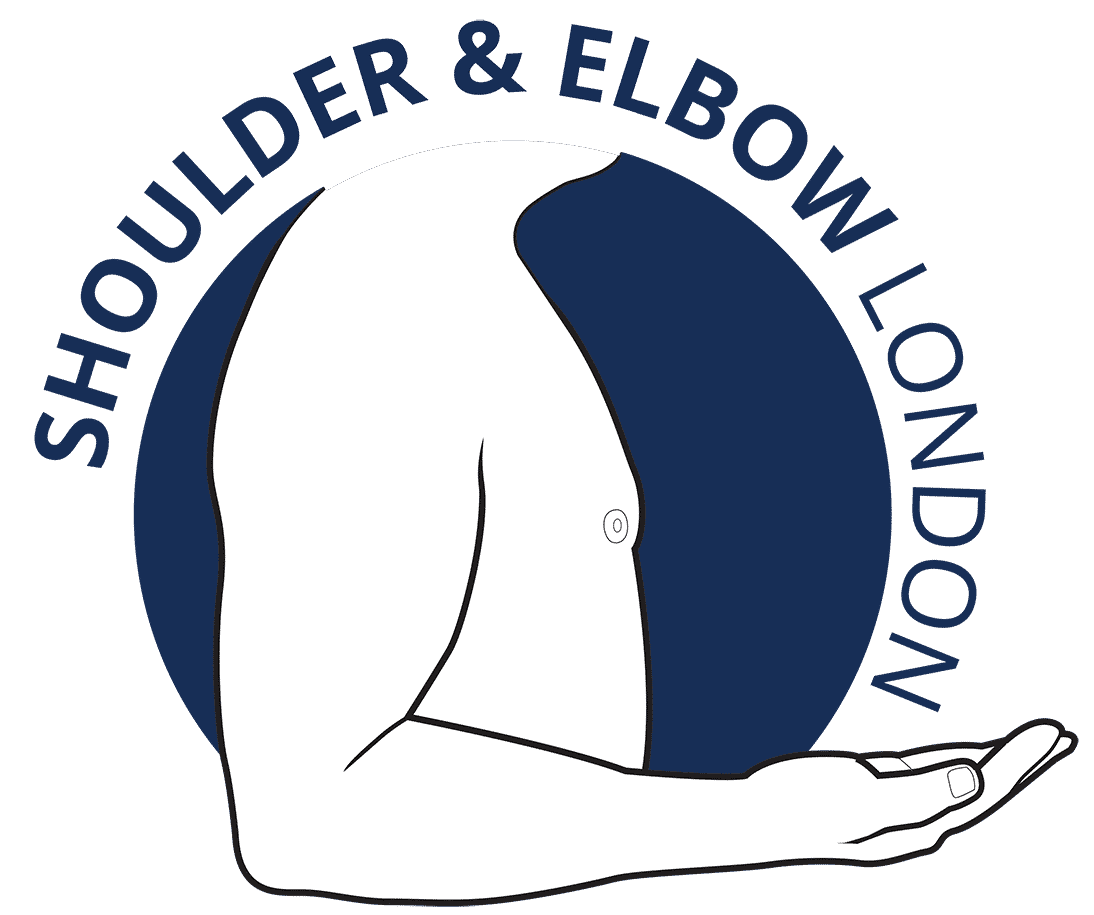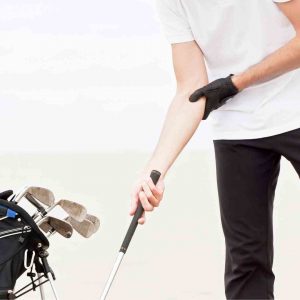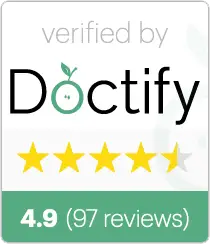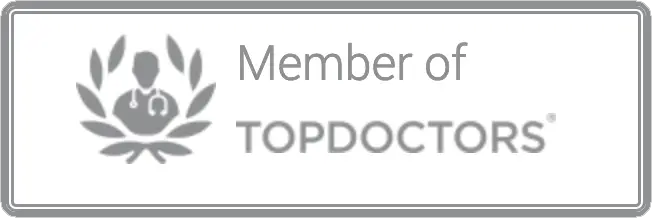
GOLFER’S ELBOW
WHAT IS GOLFER’S ELBOW?

WHAT ARE THE CAUSES?
The medial epicondyle is the pointy tip of bone on the inside of the elbow that is often referred to as the funny bone. Several muscles of the forearm that bend the wrist and fingers and rotate the wrist downwards (pronation) attach at the medial epicondyle.
It is thought that repetitive loading, overuse or overloading of these muscles can lead to micro-trauma and damage. Sports that involve pitching or throwing and overhead sports such as golf, tennis or badminton can be prone to golfer’s elbow. Occupations that require repetitive activities or carrying loads for prolonged periods or carrying loads over 20Kg can contribute to golfer’s elbow.
During the initial phase of the condition there is localised inflammation, but this progresses onto structural changes in the tendon and a failure of repair and healing mechanisms.
HOW CAN I PREVENT IT?
As with most things prevention can be better than cure. In order to prevent golfer’s elbow during sport it is important to have a good strengthening programme in place, and let a coach or trainer ensure that technique is as good as it can be. Using the right equipment is essential, so focus on grip sizes of rackets or golf clubs is key. For some tips for golfers wanting to prevent golfer’s elbow see here.
Occupational hazards such as repetitive actions can be reduced by taking regular breaks, warming up and stretching muscles before work and during breaks, minimising lifting tasks, using equipment or proper manual handling strategies to help with heavy weights, and having ergonomic assessments of workstations.
WHAT ARE THE TREATMENT OPTIONS FOR GOLFER’S ELBOW?
Most of the time non-operative treatment is the best strategy for medial epicondylitis or golfer’s elbow. In the early phases, activity avoidance, anti-inflammatory drugs, and icing using ice packs can be useful. You can purchase a useful elbow ice pack here (paid link). In later phases when inflammation has settled these strategies may be less effective.
The most evidence-based treatment is physiotherapy, and this should include strengthening of the muscles that attach to the medial epicondyle. A good physiotherapy strengthening programme is likely to take 12 weeks (3 months) to see results.
In some patients who do have aggravating activities that they cannot avoid such as work or professional sports, a golfer’s elbow splint can be useful to offload the tendons. We will examine you in clinic and advise if you are likely to benefit from a splint.
There are some important things to consider when using a splint for golfer’s elbow:
- The splint should have a pad and needs to be applied properly
- The splint should be used only during the aggravating activity and shouldn’t be worn all the time, at rest, or at night while sleeping
- The splint should not be used when you are doing your physiotherapy exercises.
You can purchase an affordable golfer’s elbow splint here (paid link). (Please note, a golfer’s elbow splint is the same as a tennis elbow splint but is worn with the pad over the inside of the forearm instead of the outside)
This video shows how to apply a tennis elbow splint, for golfer’s elbow, just rotate the splint so the pad is over the inside muscles of the forearm instead of those on the outside:
SHOULD I HAVE A STEROID INJECTION FOR MY GOLFER’S ELBOW?
Golfer’s elbow as a disease process is very similar to tennis elbow. Steroid injections were a common treatment for tennis elbow and golfer’s elbow, however in recent years there have been multiple research studies that now show that steroid injections are bad for tennis elbow. These studies show that a steroid injection will most likely improve pain for about 6 weeks however at a year, patients who have had a steroid injection for tennis elbow are likely to have a recurrence of their symptoms and usually the recurrent pain is worse than compared to patients who have had no treatments at all.
Studies also show that patients who have had steroid injections and physiotherapy do worse than those with physiotherapy alone. Steroid injections reduce the benefits of physiotherapy for tennis elbow.
As a result of this we do not offer or recommend steroid injections for tennis elbow at all, and we recommend caution in using steroid injections in golfer’s elbow. You can find out more about steroid injections here.
DOES MY GOLFER’S ELBOW NEED SURGERY?
In our experience, if golfer’s elbow is diagnosed and treated with good exercise-based physiotherapy then surgery is rarely needed.
Surgery is reserved for cases where physiotherapy has failed. There are many surgical methods described for this condition, most involve detaching the tendons from the bone, excising the diseased portion and then reattaching to the bone.
Recovery from golfer’s elbow surgery is usually 3 months for sports and heavy lifting but light activities can be resumed as soon as pain allows.
You can find out more about elbow surgery recovery here.
Nick Ferran @ Shoulder & Elbow London Ltd
Clinics in:
Chiswick – Harrow – St. Johns Wood
As an Amazon Associate, I earn from qualifying purchases.




